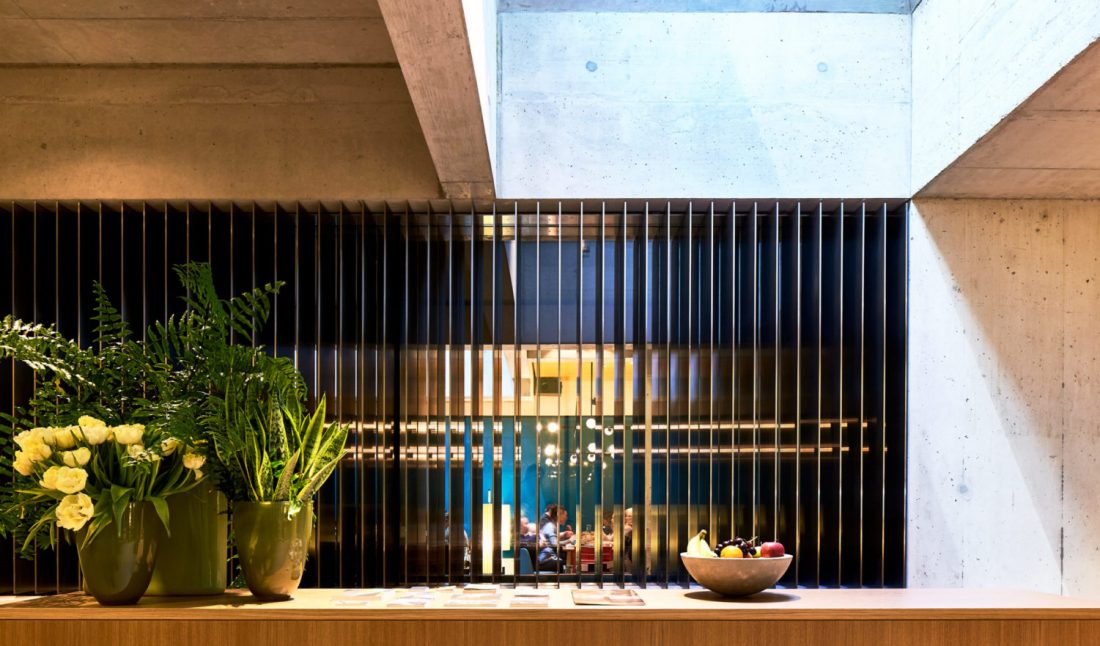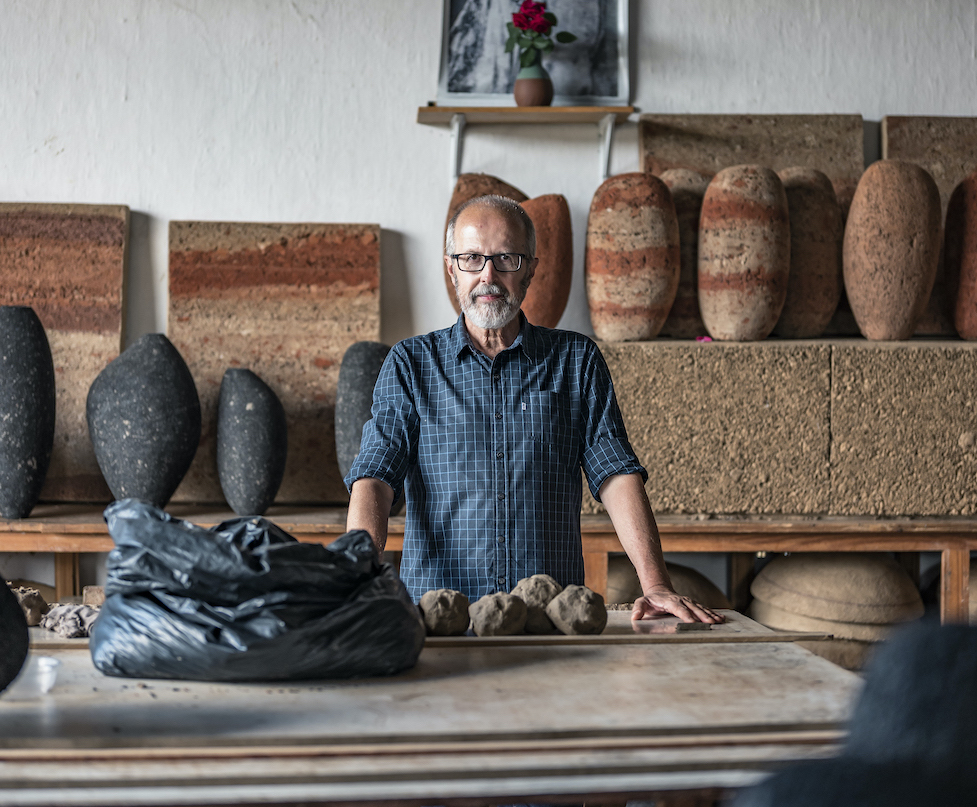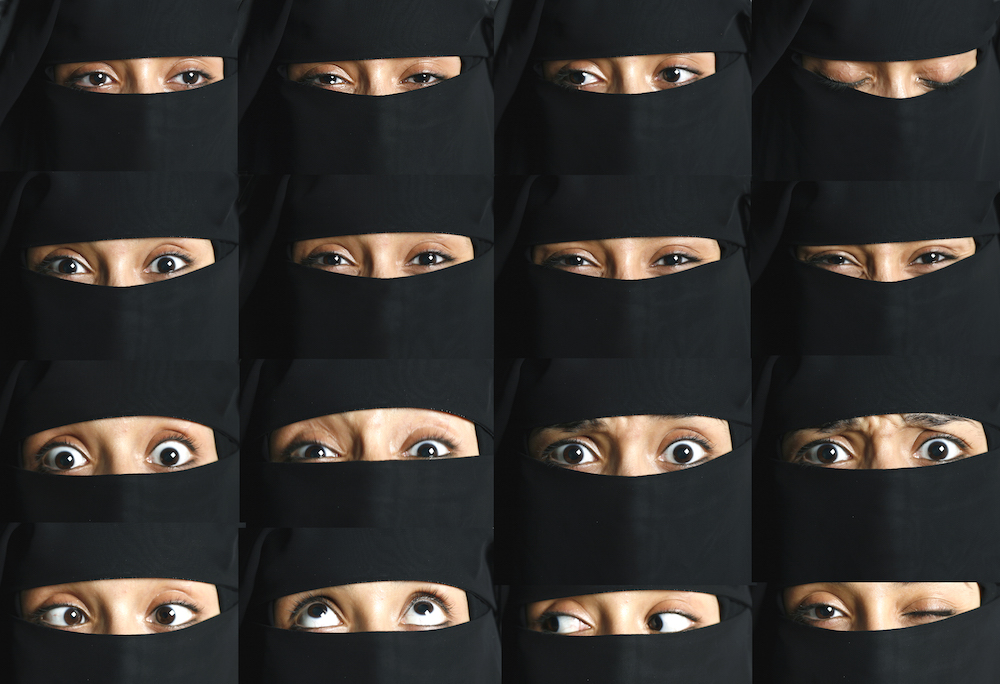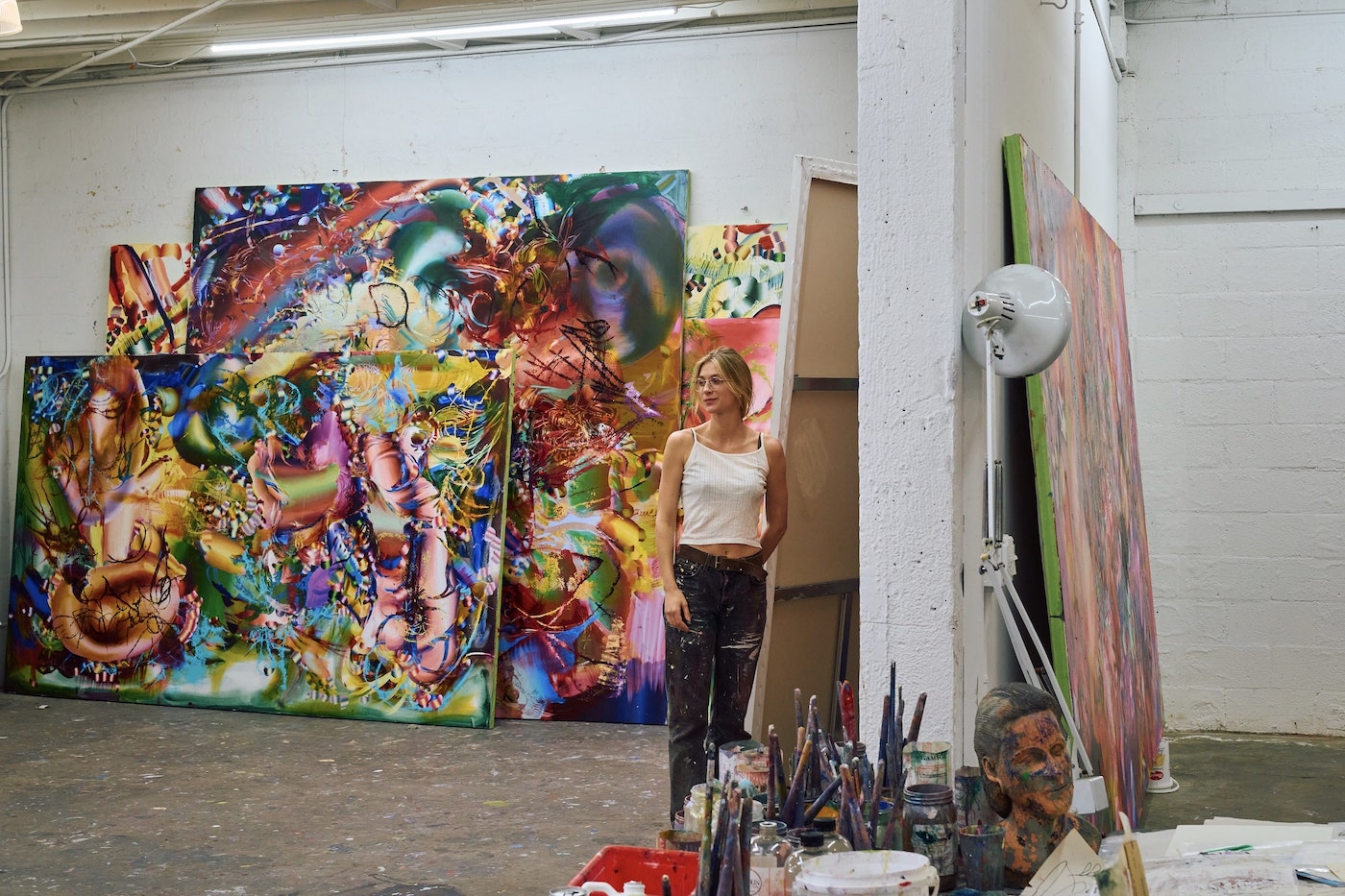Farrokh Mahdavi’s paintings can be readily recognized by a particular shade of pink. Bodies and faces are rendered nearly monochromatically, complemented by bulging eyes or pursed lips. The eyes convey a state of anxiety or fear, as seen in the Tehran based artist’s “Shaving” series, which confronts his own feelings of mortality since turning 40.
Recently, we checked in with Mahdavi to hear how he is doing during the pandemic. “The effect of this pandemic on my work is that because everywhere is closed and I have not been able to purchase anything, I have started to pay more attention to the things that are around me and I think of how to produce work and live with what is available around me.”
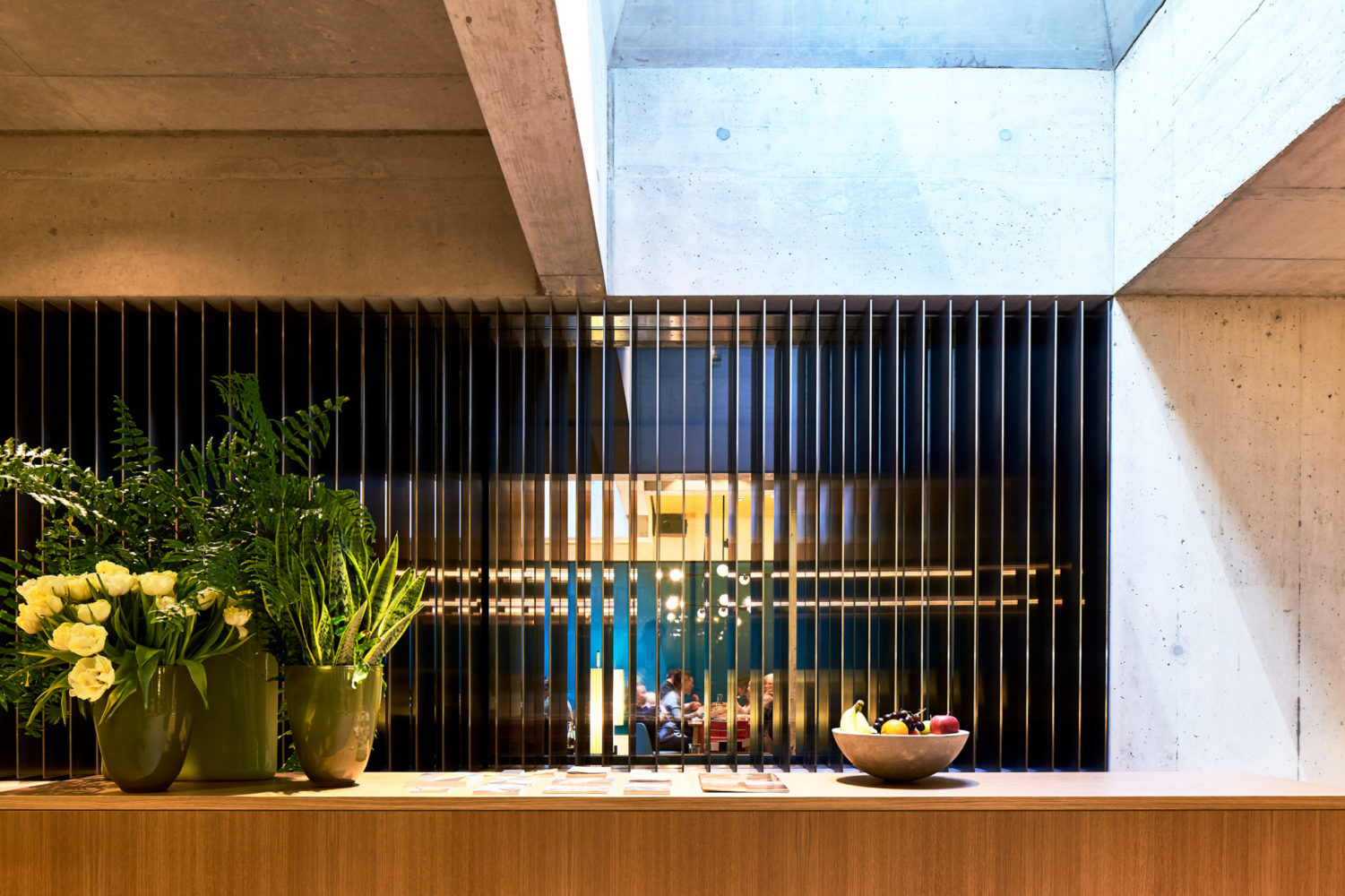 Photo by Mark Niedermann, courtesy of Nomad Eatery & Bar.
Photo by Mark Niedermann, courtesy of Nomad Eatery & Bar.
For Whitewall‘s spring 2020 Art Issue, we spoke with Mahdavi about living among his work and why sometimes it takes destroying a painting to arrive at a new experience.
WHITEWALL: Your work can be identified by a very particular shade of pink. How did you arrive at this color?
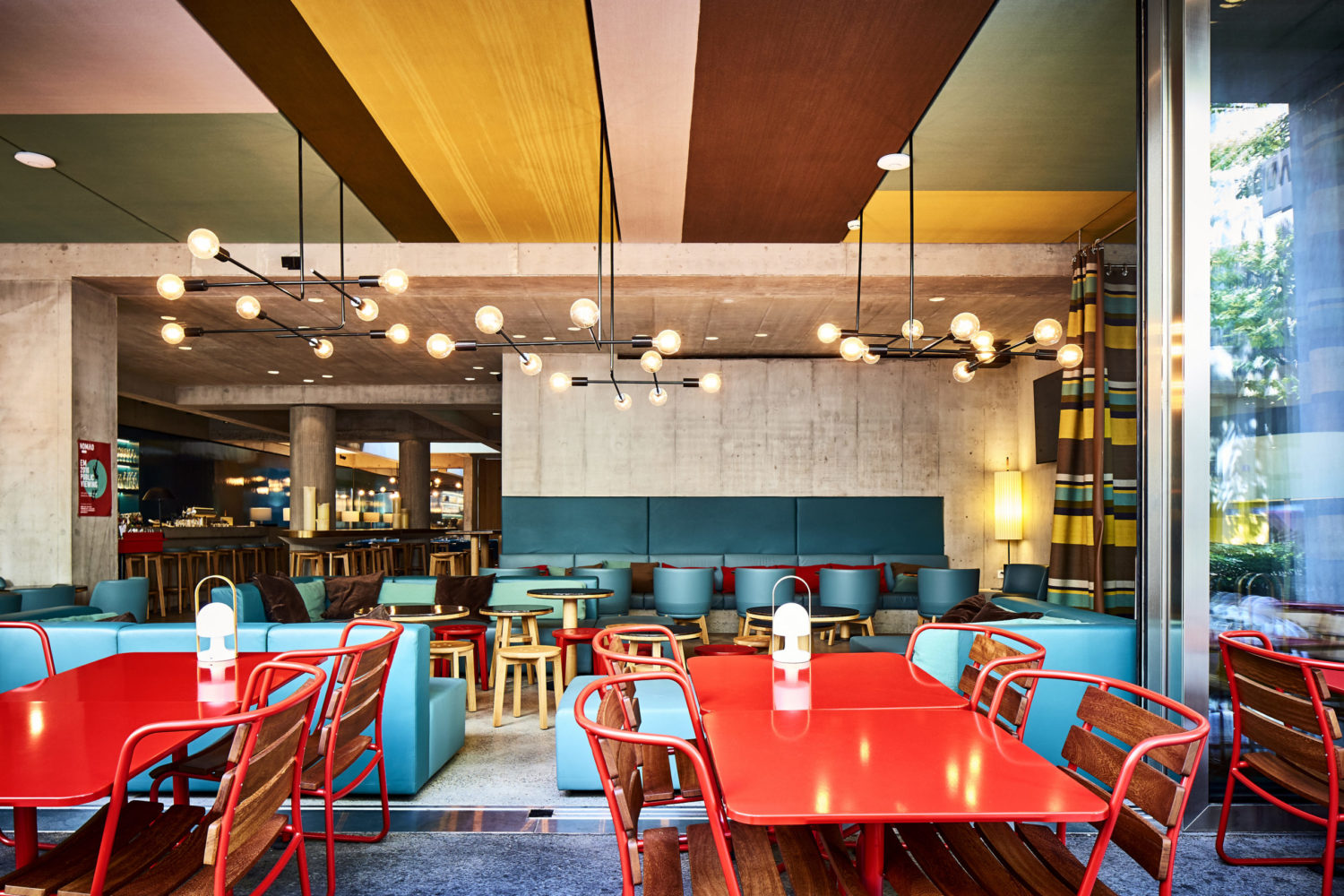 Photo by Mark Niedermann, courtesy of Nomad Eatery & Bar.
Photo by Mark Niedermann, courtesy of Nomad Eatery & Bar.
FARROKH MAHDAVI: The color pink, “soorati” in Farsi, is named after “soorat,” which refers to “face.” This is my basic description of the color pink. However, I started using this shade of pink due to my own understanding of it. It’s what I recognize and experience as pink. I prefer to work with something that I am familiar with rather than something that I have been taught. For example, in our studies they would tell us to use green, yellow, or brown beside the pink when painting a human, but I would rather use my own pink, which comes from my own definition.
WW: Can you tell us about how you use paint to obscure and omit?
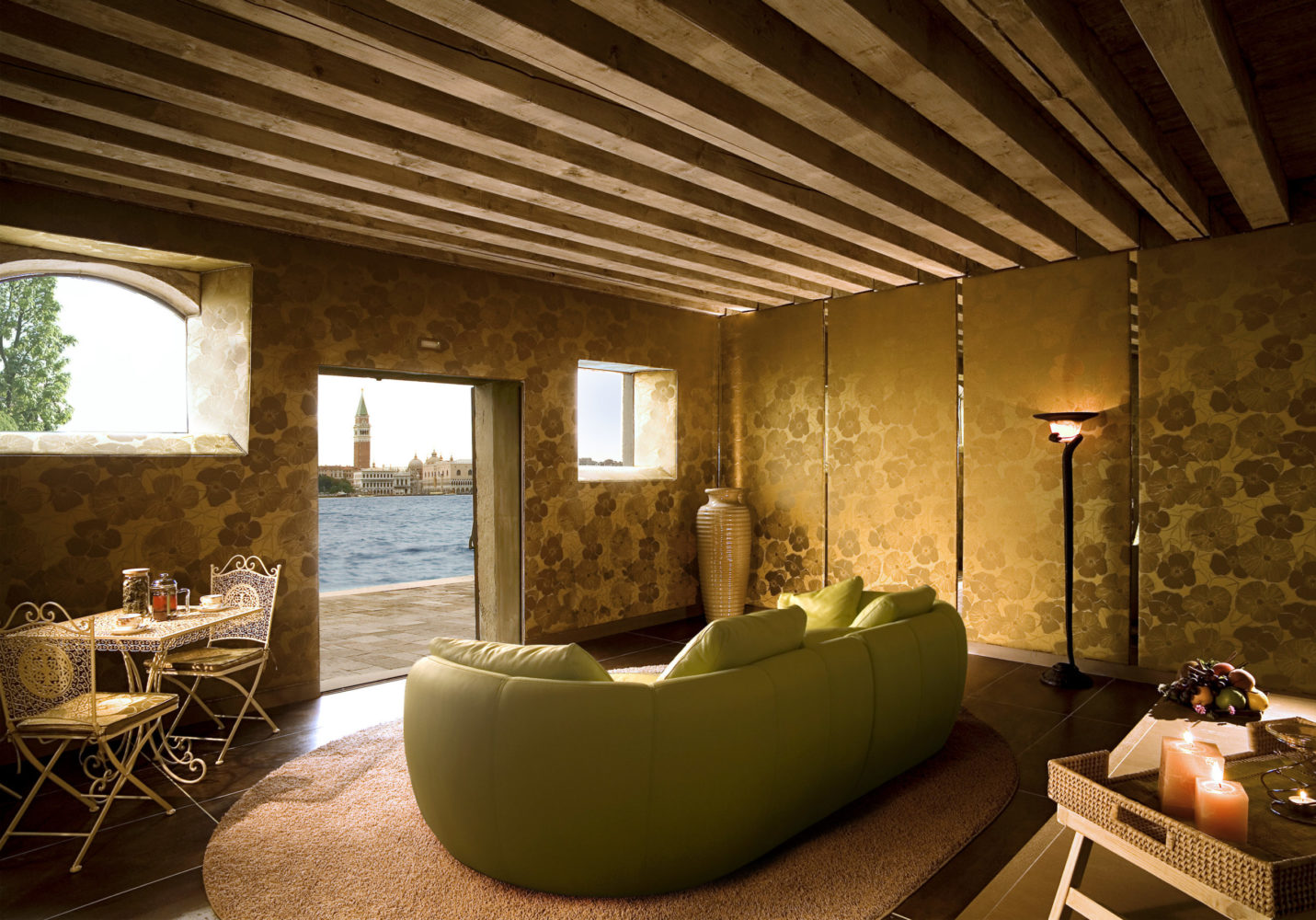 Courtesy of Palladio Hotel & Spa.
Courtesy of Palladio Hotel & Spa.
FM: In my practice, I like to specify forms and conditions without saying anything additional to that state, as I believe it deviates from the main point. That’s why sometimes I cut my works after working on a big canvas, as I feel some parts are just not adding anything to the work and are extra. For me, it’s more about that specific state when humans are forced into a situation. I try not to describe them, not to indicate their gender and maintain its sensory communication by crossing over “cliché definitions.”
WW: You’ve said that you aim to reach “a more material meaning” in your work. What do you mean by that?
FM: My aim is always to express the main points instead of looking into symbols and secondary understanding of things. This started with my “Hearts” series, when instead of showing the symbolic feelings of heart, I looked into the heart itself. It’s the same for my other works.
As mentioned before, I use the pink that I am familiar with, not the one that others describe for me. I, rather, explore the pink and my own experiences of it and describe my own perceptions. That’s why I aim to reach “a more material meaning.”
WW: In some of your paintings, just the eyes remain. And they tend to have a particular stare. What are you trying to capture with the eyes?
FM: It all started by looking at an old medical book, as it made me realize the moments and experiences when one gets stressed or is scared of something. You could easily feel the stress and fear in someone’s eyes. It reminded me of the experiences that I have had when I was anxious or doubtful. It’s about the moment that you are forced into a situation but you have no control over it and its consequences. In my work, eyes reveal that moment when one is stressed, anxious, or is afraid of an incident. In my opinion, in everyone’s unconscious, you could feel from their eyes if they are stressed or nervous. It’s the eyes that unveil this specific state.
WW: The new routine of shaving your facial hair inspired an ongoing series. Can you tell us about that?
FM: The “Shaving” series, which shows the process of shaving one’s face, started as I felt I was getting old. When I turned 40, there was a feeling that made me question life itself. I didn’t know what’s next. Since my facial hair began to turn white, I started to shave every day in order not to see the white ones. This routine became more interesting to me and led me to look into this more. By doing this, I became more and more experienced, which made me find unique experiments that I never had. Instead of planning for the work, the work itself introduced me to new experiences.
WW: What are you working on at the moment in the studio?
FM: Right now, I keep on making work, and sometimes destroy them. It’s in this routine that I find something new. It’s not like I plan to destroy a work. I start working and then I realize that it’s not what I had in mind or what I was trying to discover. I do this until something happens that introduces me to a new experience. Most of my works have been the result of this process. It is worth mentioning that I don’t usually plan for a project or an exhibition. I work until I feel there is something good happening.
WW: Could you describe your studio space for us? What is a typical day like there?
FM: It was 15 years ago that I got a studio. At the time, I was going home for sleeping. After a while, my friends were coming to the studio and we were working until late. Little by little I started staying at the studio, and I realized that I needed some stuff to be able to stay and cook at my studio. Right now, I live within my works. As I have no space for the ones that I am not happy with, I put them on the floor until I realize I can do something with them and turn them into a new work. A typical day for me is to wake up, have breakfast, and start working. Sometimes I wake up in the middle of the night and start changing my paintings, and then I get back to sleep.
WW: How would you describe who you surround yourself with in Tehran?
FM: I am an isolated person and do not have a specific community or many relationships. I have a small group of people that I hang out with. It could be said that my creative community can be found more on social media and Instagram, because I believe it inspires me and gives me new ideas.






